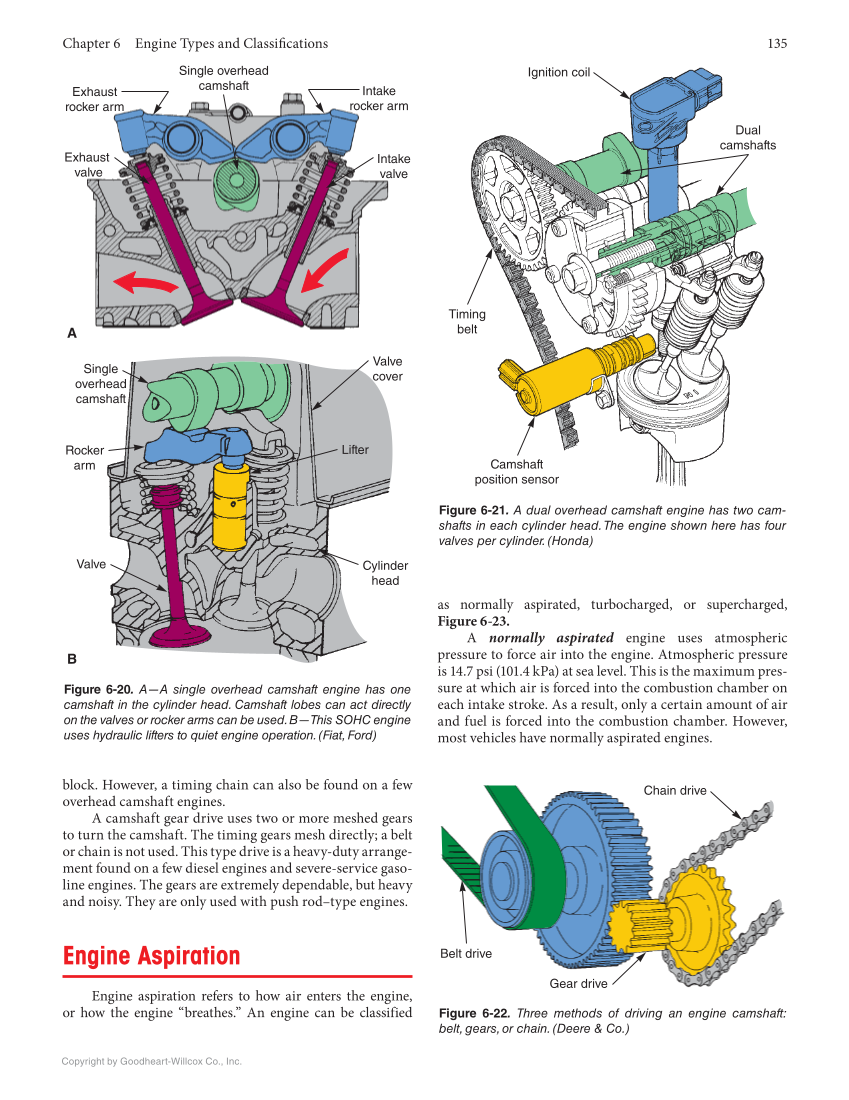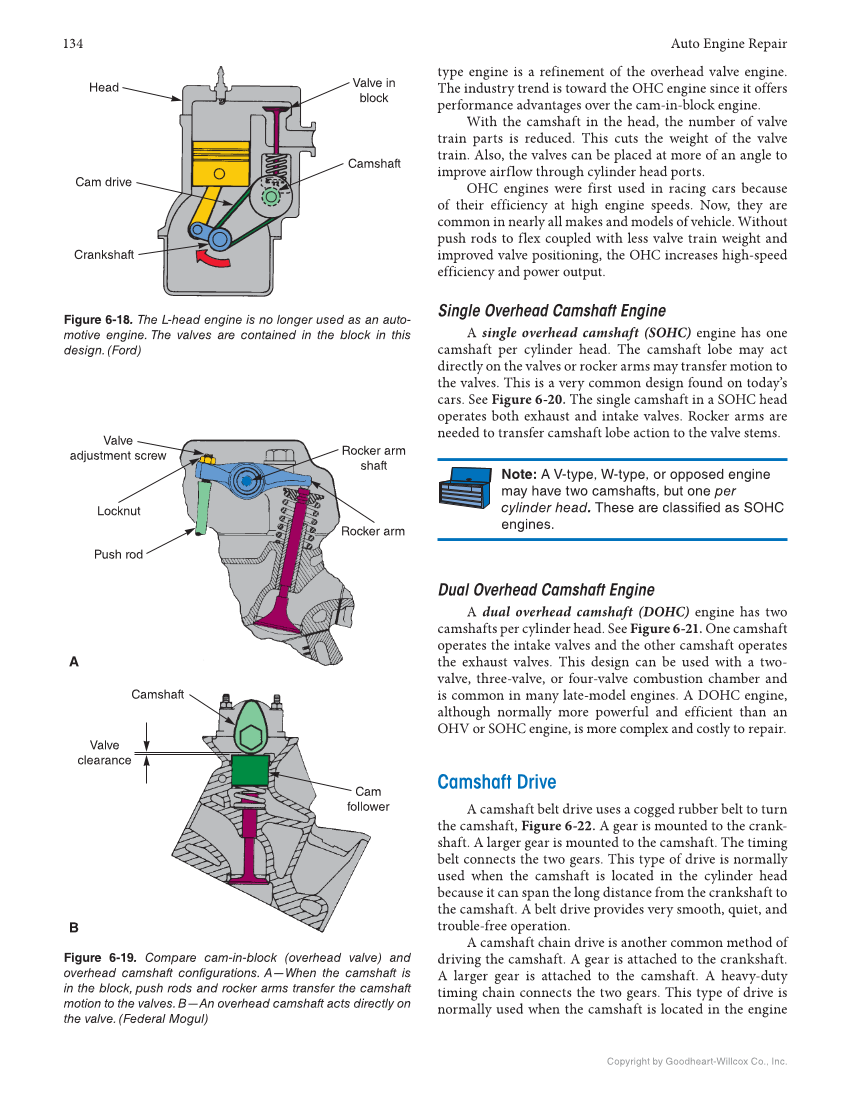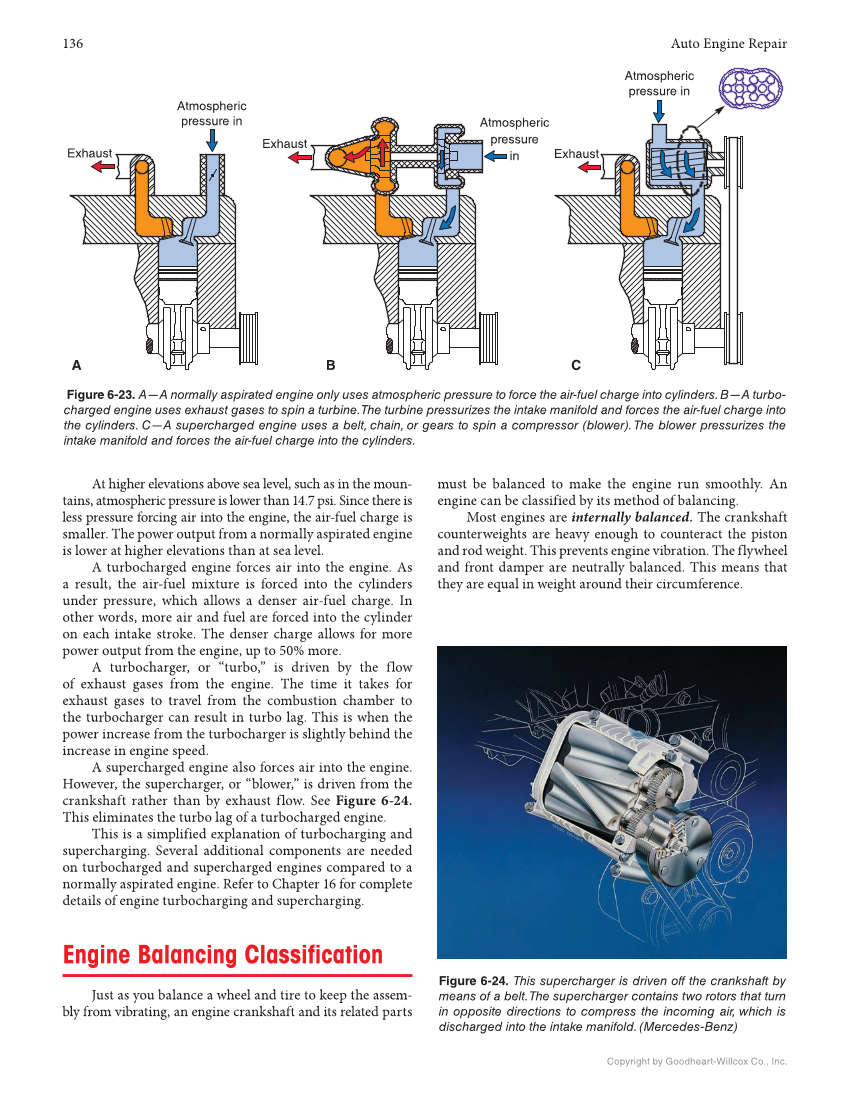Chapter 6 Engine Types and Classifi cations 135 Copyright by Goodheart-Willcox Co., Inc. Exhaust rocker arm Intake rocker arm Intake valve Exhaust valve Single overhead camshaft Single overhead camshaft A B Valve cover Lifter Cylinder head Valve Rocker arm Figure 6-20. A—A single overhead camshaft engine has one camshaft in the cylinder head. Camshaft lobes can act directly on the valves or rocker arms can be used. B—This SOHC engine uses hydraulic lifters to quiet engine operation. (Fiat, Ford) Ignition coil Dual camshafts Timing belt Camshaft position sensor Figure 6-21. A dual overhead camshaft engine has two cam- shafts in each cylinder head. The engine shown here has four valves per cylinder. (Honda) Belt drive Gear drive Chain drive Figure 6-22. Three methods of driving an engine camshaft: belt, gears, or chain. (Deere & Co.) block. However, a timing chain can also be found on a few overhead camshaft engines. A camshaft gear drive uses two or more meshed gears to turn the camshaft. The timing gears mesh directly a belt or chain is not used. This type drive is a heavy-duty arrange- ment found on a few diesel engines and severe-service gaso- line engines. The gears are extremely dependable, but heavy and noisy. They are only used with push rod–type engines. Engine Aspiration Engine aspiration refers to how air enters the engine, or how the engine “breathes.” An engine can be classified as normally aspirated, turbocharged, or supercharged, Figure 6-23. A normally aspirated engine uses atmospheric pressure to force air into the engine. Atmospheric pressure is 14.7 psi (101.4 kPa) at sea level. This is the maximum pres- sure at which air is forced into the combustion chamber on each intake stroke. As a result, only a certain amount of air and fuel is forced into the combustion chamber. However, most vehicles have normally aspirated engines.
Auto Engine Repair, 7th Edition, Online Textbook Page 135 (145 of 608)
Powered by Tizra® |
Extracted Text (may have errors)
Chapter 6 Engine Types and Classifi cations 135 Copyright by Goodheart-Willcox Co., Inc. Exhaust rocker arm Intake rocker arm Intake valve Exhaust valve Single overhead camshaft Single overhead camshaft A B Valve cover Lifter Cylinder head Valve Rocker arm Figure 6-20. A—A single overhead camshaft engine has one camshaft in the cylinder head. Camshaft lobes can act directly on the valves or rocker arms can be used. B—This SOHC engine uses hydraulic lifters to quiet engine operation. (Fiat, Ford) Ignition coil Dual camshafts Timing belt Camshaft position sensor Figure 6-21. A dual overhead camshaft engine has two cam- shafts in each cylinder head. The engine shown here has four valves per cylinder. (Honda) Belt drive Gear drive Chain drive Figure 6-22. Three methods of driving an engine camshaft: belt, gears, or chain. (Deere & Co.) block. However, a timing chain can also be found on a few overhead camshaft engines. A camshaft gear drive uses two or more meshed gears to turn the camshaft. The timing gears mesh directly a belt or chain is not used. This type drive is a heavy-duty arrange- ment found on a few diesel engines and severe-service gaso- line engines. The gears are extremely dependable, but heavy and noisy. They are only used with push rod–type engines. Engine Aspiration Engine aspiration refers to how air enters the engine, or how the engine “breathes.” An engine can be classified as normally aspirated, turbocharged, or supercharged, Figure 6-23. A normally aspirated engine uses atmospheric pressure to force air into the engine. Atmospheric pressure is 14.7 psi (101.4 kPa) at sea level. This is the maximum pres- sure at which air is forced into the combustion chamber on each intake stroke. As a result, only a certain amount of air and fuel is forced into the combustion chamber. However, most vehicles have normally aspirated engines.


